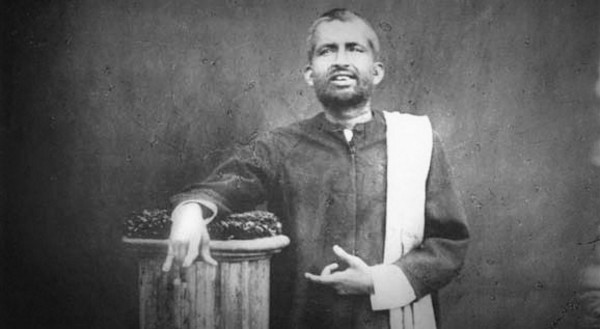
Sri Ramakrishna Paramahamsa (1836–1886,) the eminent Hindu mystic of 19th-century India, used stories and parables to portray the core elements of his philosophy. The meaning of Sri Ramakrishna Paramahamsa’s stories and parables are usually not explicitly stated. The meanings are not intended to be mysterious or confidential but are, in contrast, quite uncomplicated and obvious.
In the Hindu and other traditions of the major religions of the world, parables form the language of the wise for enlightening the simple, just as well as they form the language of the simple for enlightening the wise.
The Parable of Akbar and the Fakir
During the reign of the great Mughal emperor Akbar, there lived a Fakir (a Muslim ascetic) in a particular forest near Delhi. Many used to resort to the cottage of this holy man. However, he had nothing to show hospitality to these visitors. He was in need of some money for this purpose and went for help to Akbar Shah, who was well known for his kindness towards holy men.
Akbar Shah was then saying his prayers and the Fakir took his seat in the prayer room. In the course of his prayers, the Fakir heard Akbar ask, “O Lord, do Thou grant me more wealth, more power, more territories!”
At once the Fakir rose and was about to depart from the waiting room when the Emperor beckoned him to be seated again.
At the end of the prayer, Akbar asked the Fakir, “Sir, you came to see me. How is it then that you wanted to depart without saying anything to me?”
The Fakir said, “The purpose of my visit to your Majesty, I need not concern you with that.”
When Akbar repetitively pressed him to say what he wanted, the Fakir at last said, “Your Majesty, many people come to me to be taught, but for want of money I am unable to see to their comforts. So I thought it well to come to your Majesty for help.”
Akbar then asked why he was about to go away without having told him the purpose of his visit.
The Fakir replied, “Why should I go begging to a person who is himself a beggar? I had better beg of the Lord Himself, if indeed it is not possible for me to do without begging altogether.”
Sri Ramakrishna Paramahamsa was born Gadadhar Chattopadhyay and initiated a religious school of thought that guided the formation of the Ramakrishna Order of monks that transformed into the Ramakrishna Mission under the leadership of his principle disciple Swami Vivekananda. Sri Ramakrishna Paramahamsa initially attracted several monastic and household disciples as a priest at the Dakshineswar Kali Temple.
Sri Ramakrishna Paramahamsa once said, “To work without attachment is to work without the expectation of reward or fear of any punishment in this world or the next. Work so done is a means to the end, and God is the end.”
Recommended Books
- ‘Great Swan: Meetings with Ramakrishna’ by Lex Hixon
- ‘Complete Works of Swami Vivekananda’ by Swami Vivekananda and Sister Nivedita
- ‘Ramakrishna: His Life and Sayings’ by Sri Ramakrishna Paramahamsa
- ‘Gospel of Sri Ramakrishna’ by Swami Nikhilananda
- ‘Ramakrishna Paramahamsa: The Sadhaka of Dakshineswar’ by Amiya P. Sen
- ‘Vivekananda: A Biography’ by Swami Nikhilananda